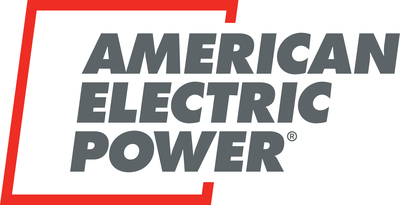AEP Leveraging Fuel Cell Technology to Power Data Center Growth
Rhea-AI Summary
American Electric Power (AEP) has announced a major initiative to deploy up to 1 gigawatt (GW) of Bloom Energy solid oxide fuel cells to support data centers and large energy users. This represents the largest utility fuel cell technology initiative in the nation. The company expects 20% annual commercial load growth over the next three years, primarily driven by data center development.
The fuel cells will initially operate on natural gas, with potential for future hydrogen use. All project costs will be covered by large customers under special contracts. AEP is currently finalizing the first customer agreements and discussing additional projects with other customers while developing long-term grid infrastructure.
Positive
- Secured agreement for up to 1 GW of fuel cell capacity
- Projected 20% annual commercial load growth over next 3 years
- Project costs fully covered by customers under special contracts
- Expansion of service capability for data center customers
Negative
- Initial reliance on natural gas rather than cleaner alternatives
- Requires additional regulatory approvals
- Significant infrastructure investment needed for long-term grid development
Insights
This strategic move positions AEP at the forefront of addressing the surging data center power demands. The 1 GW fuel cell agreement with Bloom Energy represents a significant infrastructure investment, with
The initiative's flexibility to transition from natural gas to hydrogen fuel demonstrates forward-thinking infrastructure planning. This approach allows AEP to bridge the immediate power needs while developing traditional grid infrastructure, creating a dual-track strategy for managing explosive data center growth. The project's scale and innovative funding structure could serve as a model for other utilities facing similar rapid commercial load growth challenges.
This development is particularly significant for the data center sector, addressing a critical bottleneck in expansion plans. The fuel cell solution offers a important stopgap measure for data centers requiring immediate power availability, which traditional grid infrastructure buildouts cannot match in timing. The customer-funded model aligns with data center operators' preference for predictable costs and dedicated infrastructure.
The initiative's scale suggests AEP is preparing for multiple hyperscale deployments across its service territory. The ability to rapidly deploy power solutions could make AEP's service area more attractive for future data center investments, potentially catalyzing additional technology sector growth in their regions.
This customer-focused effort is the largest utility fuel cell initiative in the country
AEP expects commercial load to grow an average of
"The rapid increase in energy demand is a challenge that AEP is tackling by finding innovative solutions to meet the unique needs of our customers," said Bill Fehrman, AEP president and chief executive officer. "These fuel cells will help provide data centers and other large customers with the power they need to quickly expand in our regulated footprint as we continue to build infrastructure to deliver reliable energy for all our customers."
AEP has previous experience using Bloom Energy's fuel cell technology to power customers. Initially, the projects will rely on natural gas, however, the technology has the potential to use hydrogen as an alternative fuel. These customer-sited resources will be required to meet the interconnection rules of the local operating company and will be designed to not send any energy back to the electric grid. AEP will work with regulators to secure the necessary approvals needed for these projects.
About AEP
Our team at American Electric Power is committed to improving our customers' lives with reliable, affordable power. We are investing
![]() View original content to download multimedia:https://www.prnewswire.com/news-releases/aep-leveraging-fuel-cell-technology-to-power-data-center-growth-302306072.html
View original content to download multimedia:https://www.prnewswire.com/news-releases/aep-leveraging-fuel-cell-technology-to-power-data-center-growth-302306072.html
SOURCE Appalachian Power






